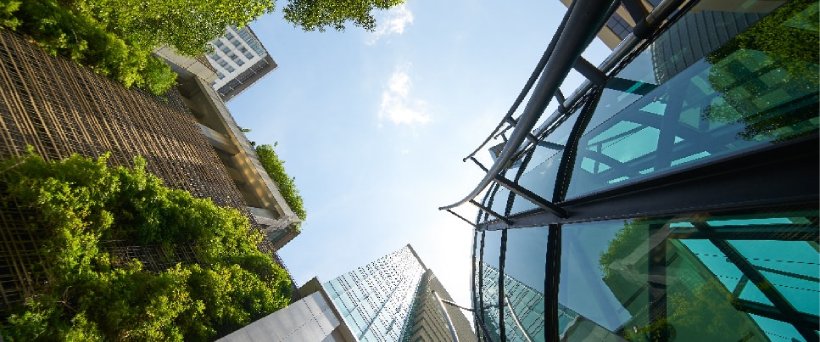Net-zero emissions by 2050: What does Net-zero mean?

From industry events, government press releases and various net-zero commitments from different cities and companies, everyone is standing up to agree that we need to be net-zero sooner than the turn of the century. But what does ‘net-zero’ actually mean?
The decision to tackle climate change
Buildings account for 35% of total greenhouse gas emissions, making them a high priority area for government when meeting environmental targets; especially in the more easily regulated new build sector. In the UK, the Government has always wanted to be a world leader in reducing the damaging effect of greenhouse gas (GHG) emissions, like CO2.
Having been a key signatory of the Paris agreement in 2008, the UK pledged to reach net-zero carbon emissions by the turn of the century. However, recent scientific discoveries led to a re-evaluation of the urgency required to tackle the climate crisis and have meant an escalation in efforts to achieve net-zero. The Government, in response to strong industry and society support, declared a climate change emergency and has now put net-zero carbon emissions by 2050 in UK law.
Why is moving net-zero forward considered so important?
The amount of CO2 in the atmosphere has increased faster than scientists predicted. At present, the atmosphere contains a CO2 concentration of 415.26 ppm, which is dangerously close to 450 ppm; the point at which scientists warn of catastrophic and irreversible changes in the climate.
What do we mean by PPM (parts per million)?
Parts per million means, in this instance, that if you could count one million gas molecules, 415.26 of them would be CO2.

But what is net-zero?
Net-zero refers to the achievement of an overall balance between emissions produced and emissions taken out of the atmosphere through carbon storage capture (CSC).
The target of achieving this by 2050 is undoubtedly ambitious and investment in the low-carbon sector is needed to radically decarbonise the economy. It will require strategic coordination to accomplish the transition and will affect all areas of the built environment, from product specification to construction techniques.
However, the exact definition and scope of net-zero is not yet known. For example, it is expected that in a net-zero economy you should account for the carbon created during product manufacturing – but what about the carbon created during transporting these good to site? And if we’re looking at carbon in transport to site, why not the carbon created as the workforce travel to and from work each day? Or if they pop out on their lunch break to the nearest shop? In other words, at what point do you stop measuring carbon creation.
Many would argue that net-zero means net-zero, but this has a huge and wide-ranging impact on the built environment; which cannot afford to stop building as it must keep up with population growth and the resulting demand for more homes.
How can you capture and store carbon?
Government is putting a lot of emphasis on hoping that a new technology will emerge to allow effective carbon storage capture.
Currently, the only way known to do this is through planting trees and other plants to absorb carbon out of the air. Therefore, in a net-zero society, you would need to plant as many trees as is required to absorb the amount of carbon being created.

When will the Government set the net-zero scope?
Government is currently being ambiguous as to how they intend to achieve its target of net-zero emissions by 2050, including on what net-zero actually includes.
Industry is calling for a steady progression toward net-zero over the next 30 years, rather than a dash over the finish line at the last minute. The Committee on Climate Change has already stated that the Government needs to apply “more challenging measures” in order to meet our existing targets, which are nowhere near as extensive as reaching net-zero by 2050. Therefore, what we do know is that the construction industry should brace for change, and expect it to arrive sooner rather than later.
Specification with the future in mind
At Glen Dimplex Heating & Ventilation, we have a team of people who not only understand, but also consult on the direction of the industry, meaning we can help to keep you up to date with the most recent changes which could affect HVAC specification.
We also use this knowledge to innovate HVAC solutions which meet the current and future requirements of industry. To learn more, go to our contact us page to be put in contact with your regional Business Development Manager.


